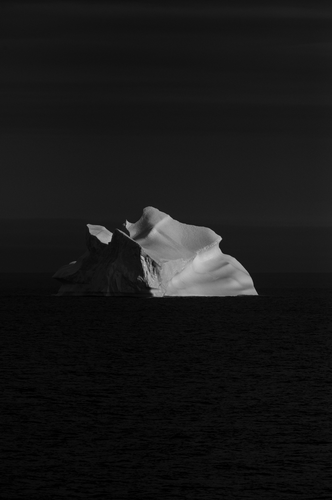

DEFINITION
Dr. Marc St-Onge
When examining the geological record of ice, we can observe large continental ice sheets in the northern hemisphere that have grown and changed many times in the past. Periods with large ice sheets are called “glacial periods” or “ice ages” and periods without large ice sheets are called “interglacial periods”. The present interglacial period is called the Holocene and started 11,700 years ago. The most recent glacial period (the Last Ice Age) lasted from 11,700 years ago to 120,000 years ago. On average, glacial periods last ~95,000 years and interglacial periods last 15,000 years—suggesting that we have just over 3,000 years left before the next ice age.
To understand what our planet looked like thousands of years ago, scientists study ice cores. An ice core is a cylinder of ice drilled out of an ice sheet or a glacier. Most ice core records come from Antarctica and Greenland. Ice cores provide direct information about how the composition of the atmosphere and greenhouse concentrations have changed in the past. They also provide direct evidence that the climate can change abruptly under some circumstances. For example, atmospheric carbon dioxide levels are now 50% higher than before the Industrial Revolution. This increase is undoubtedly due to fossil fuel usage and changes in land-use. The magnitude and rate of the recent increase are almost certainly unprecedented over the last 800,000 years, revealing the rapid impact of fossil fuel activity on climate. Ice cores give us a snapshot of the past, but help us predict the future of human civilization against the backdrop of a changing climate.

Iceberg drifting down the Davis Strait propelled by ocean currents and strong winds. Davis Strait, 2024.
Photography By Pamela EA
RESEARCH
Definition edited by Sorah Park,
based on notes by Dr. Marc St-Onge
Research by Micheala Chan
Fact-checked by Hailey Basiouny
November 7, 2024
Global warming has caused a dramatic decrease in Arctic sea ice cover, with the Arctic Ocean losing 95% of its oldest and thickest ice since the mid-1980s. The Greenland ice sheet has now lost mass every year. The abrupt loss of ice raises concerns and questions regarding its role within the cycles of our planet’s climate.
Snow and ice play an important role in traditional Inuit medicine, valued for their healing properties such as reducing inflammation and alleviating wounds. They also serve as ritual and ceremonial tools, with snow and ice sculpting seen as a meditative practice to foster a deeper connection with the natural world. The rapid warming driven largely from the burning of fossil fuels, is quickly disrupting both ecosystems and cultural heritage, altering long cycles of glaciation.
The oldest continuous ice core records extend 123,000 years in Greenland and 800,000 years in Antarctica. Using the small air bubbles in ice cores, samples of the atmosphere at the time of freezing, we can observe a strong positive correlation between CO2 concentrations and global temperature. Ice cores provide a historical picture of how climate can undergo significant changes from both natural and anthropogenic pollution in the atmosphere.
Geological evidence of past ice ages includes ancient glaciers, which left behind giant scratch marks on bedrock and transported boulders over long distances, eventually depositing them in the sea. There are over a dozen ice ages documented in the geologic record. The ongoing levels of anthropogenic carbon emissions are unprecedented, differentiating this current interglacial cycle from ice age cycles in the past.
The new abnormal. (2024, October 3). National Snow and Ice Data Center. https://nsidc.org/sea-ice-today/analyses/new-abnormal
National Oceanic and Atmospheric Administration. “Greenland Ice Sheet.” Arctic Report Card: 2022. Accessed October 24, 2024. https://arctic.noaa.gov/report-card/report-card-2022/greenland-ice-sheet/.
Bachand, B. (2023, July 21). The Use of Snow and Ice in Traditional Inuit Medicine. (2024). Renu Therapy. https://www.renutherapy.com/blogs/supporting-knowledge/the-use-of-snow-and-ice-in-traditional-inuit-medicine
Bauska, T. (2022, June 30). Ice cores and climate change. British Antarctic Survey. https://www.bas.ac.uk/data/our-data/publication/ice-cores-and-climate-change/
Scott, M. (2021, February 18). What's the coldest the Earth's ever been? NOAA climate.gov. https://www.climate.gov/news-features/climate-qa/whats-coldest-earths-ever-been
We use cookies to analyze site usage and enhance navigation. By accepting, you agree to our use of cookies. Accept
Subscribe to our newsletter and be the first to get news on climate literacy!

By submitting I confirm that I have read Climate Words’ privacy policy and agree that Climate Words may send me announcements to the email address entered above and that my data will be processed for this purpose in accordance with Climate Words’ privacy policy.